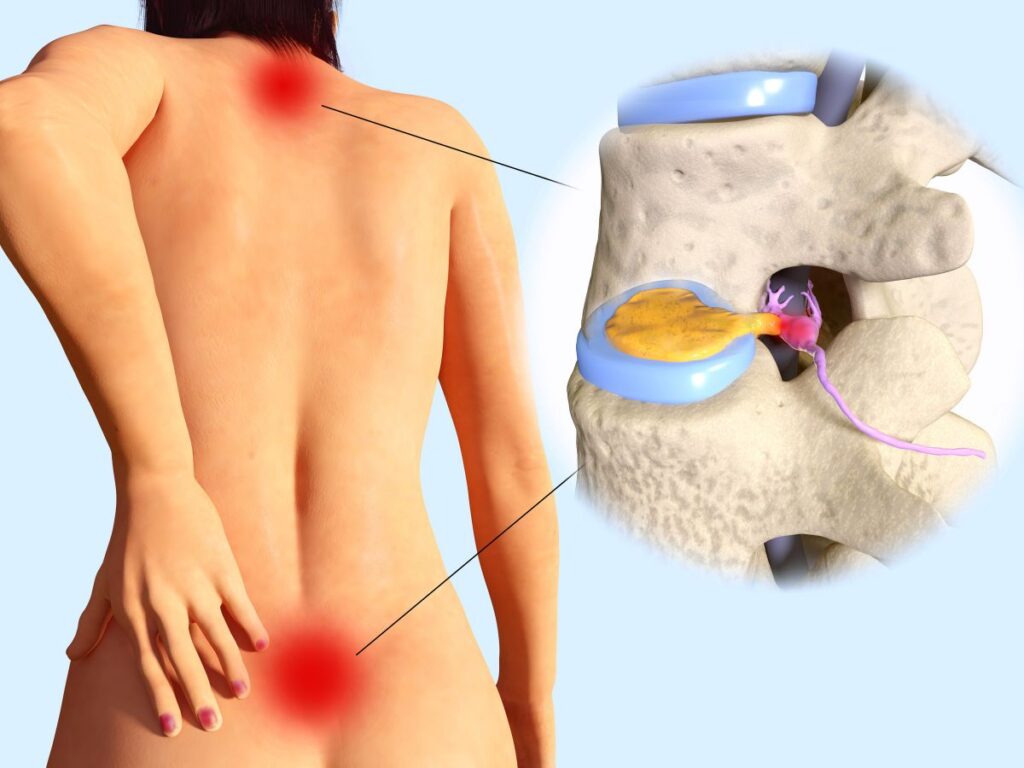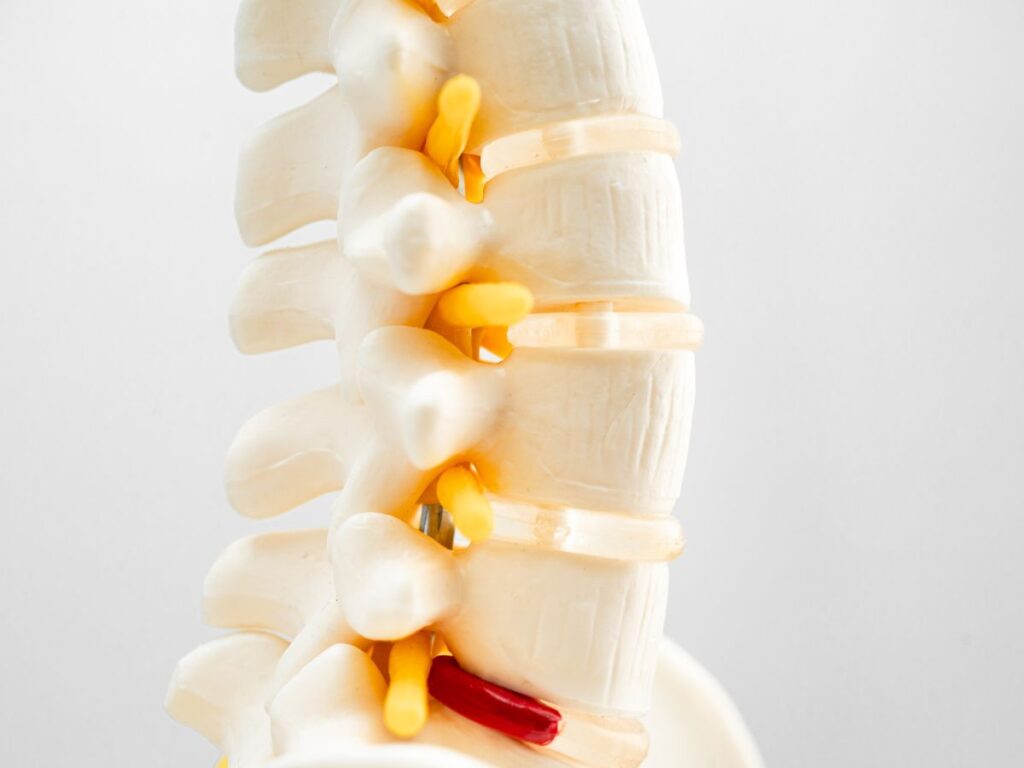Why Pinched Nerves Benefit from Decompression
A pinched nerve arises when surrounding tissues—discs, ligaments, or bones—apply excessive pressure, disrupting normal nerve signals and sparking radiating pain, numbness, or tingling. While medication may dull the discomfort, it rarely resolves the underlying compression. Spinal decompression therapy specifically targets this mechanical stress, gently widening the spaces where nerves pass. Through controlled pull-and-release cycles, discs and joints decompress, relieving the nerve of its constant squeeze. Over multiple sessions, inflammation subsides, function returns, and you can move, bend, or twist without the nagging fear of pinching sensations. By pairing decompression with Dr. Elham’s alignment insights, you lay a robust foundation to keep nerve irritation at bay long-term.
Common Pinched Nerve Triggers
Herniated or bulging discs frequently top the list, encroaching on spinal nerve roots. Degenerative joint changes, like osteoarthritis or bone spurs, can also encroach on nerve pathways. Poor posture, extended sitting, or sudden injuries can shift vertebrae, compounding nerve entrapment. Even tight muscles—like the piriformis—may clamp down on nerves passing through the pelvis. Spinal decompression counters these issues by mechanically undoing the compressive forces. By restoring disc thickness and vertebral spacing, the nerve regains room to function unimpeded, transforming persistent pinch pain into comfortable, easy motion.
Mechanics of Decompression
In a decompression session, you recline on a specialized table, often harnessed around the hips. A motorized system exerts gentle traction along the spine, then releases, in carefully timed cycles. This repeated stretch-and-relax pattern creates negative pressure within discs, helping them reabsorb fluid and shrink bulges that squeeze nerves. Dr. Elham adjusts the table’s angle and pull intensity based on which nerve levels are affected—lumbar for leg symptoms, cervical for arms or upper back. The therapy remains gradual and noninvasive, favoring natural healing processes over drastic interventions that might carry surgical or pharmacological risks.
How Dr. Elham Integrates Care
Despite decompression’s focus on nerve compression, other factors—like misaligned vertebrae or weak core muscles—can perpetuate pinch points. Dr. Elham’s chiropractic lens addresses these contributing misalignments. Post-session spinal adjustments may help lock in the newly expanded disc space, preventing re-compression. If muscle spasms or tight fascia sabotage decompression gains, Dr. Elham recommends specific stretches, massage therapy, or posture drills. This comprehensive approach ensures the nerve corridor remains open, letting each traction cycle build upon the last, rather than losing ground to muscular or structural imbalances.
Top Benefits for Pinched Nerves
Embracing decompression therapy for nerve compression brings multiple benefits:
- Alleviated Pressure: Traction frees the nerve from disc or joint encroachment.
- Enhanced Healing: Negative pressure fosters fluid exchange, nurturing damaged tissues.
- Less Reliance on Painkillers: With root causes addressed, heavy meds often become optional.
- Noninvasive Approach: Avoiding surgery spares scarring, anesthesia, and extensive downtime.
- Structural Longevity: Improved spinal alignment and disc health reduce recurrences of nerve entrapment.
Gradually, these rewards mean fewer twinges when bending, less tingling in limbs, and a renewed confidence that daily motion won’t spark an uncomfortable pinch.
Maintaining Progress at Home
Between decompression visits, Dr. Elham frequently advises simple core exercises—like planks or supine leg raises—to stabilize vertebrae. Stretching tight muscle groups—such as the hamstrings or hip flexors—prevents undue pull on the spine that could re-compress nerves. If posture is a culprit, ergonomic fixes like an adjustable desk or lumbar cushion keep the spine aligned throughout the day. Avoiding abrupt, twisting heavy lifts further reduces re-injury. By consciously applying these habits, you help sustain each traction session’s gains, letting nerve tissue recover fully without constant mechanical aggravation.
Navigating Activity Challenges
When nerves pinch, tasks as simple as rotating the trunk to pick up objects or standing at a counter can trigger jolts of pain or numbness. Decompression alleviates that nerve impingement, opening the path to normal movement. Dr. Elham watches your functional patterns—like how you bend or twist—and proposes micro-breaks or posture resets if your job entails repetition. Athletes might temporarily adjust training volume, focusing on controlled form that respects healing nerve space. Over repeated therapy sessions, these routine motions regain fluidity, letting you trust your back or neck without the dread of sudden nerve flares.
Potential Risks of Ignoring the Pinch
Left unaddressed, chronic nerve compression can progress to muscle atrophy, lingering numbness, or radiculopathy that radiates down limbs. Sleep disruptions arise from constant pain, undermining mood and daily energy. The body may adopt skewed postures to dodge nerve twinges, ultimately straining other joints. In extreme cases, nerve damage may become irreversible, complicating future recovery. Spinal decompression deters this escalation, proactively reversing compressive forces and preserving nerve integrity. Acting swiftly on a pinched nerve fosters smoother healing, fending off advanced complications that demand invasive solutions.
Typical Session Flow
Before therapy, Dr. Elham reviews nerve pain patterns—perhaps noticing a particular side or region. You then lie on the decompression table, harnessed comfortably. The machine applies a gentle pull, held for several seconds, before relaxing. This cycle repeats for 15–30 minutes, with intensity calibrated to your tolerance. Many describe the sensation as a gradual, satisfying stretch rather than a forceful yank. Afterward, Dr. Elham might perform a mild chiropractic adjustment or recommend a quick walk to stabilize the traction benefits. Over ongoing sessions, nerve flare-ups diminish and range of motion expands significantly.
Crafting a Future Free from Pinches
Spinal decompression therapy for pinched nerves addresses the mechanical root cause that so often traps people in cycles of pain. By systematically easing compressive pressure on nerve tissues, each session bolsters your capacity for normal, pain-free motion. Dr. Elham’s integrated approach cements these results—emphasizing posture, muscle conditioning, and targeted adjustments. As nerve inflammation recedes, you’ll rediscover your ability to bend, twist, or stretch without that sharp pinch or radiating tingle. Over time, a once-debilitating nerve entrapment becomes a resolved chapter, replaced by ongoing comfort and the confidence to move unencumbered.






